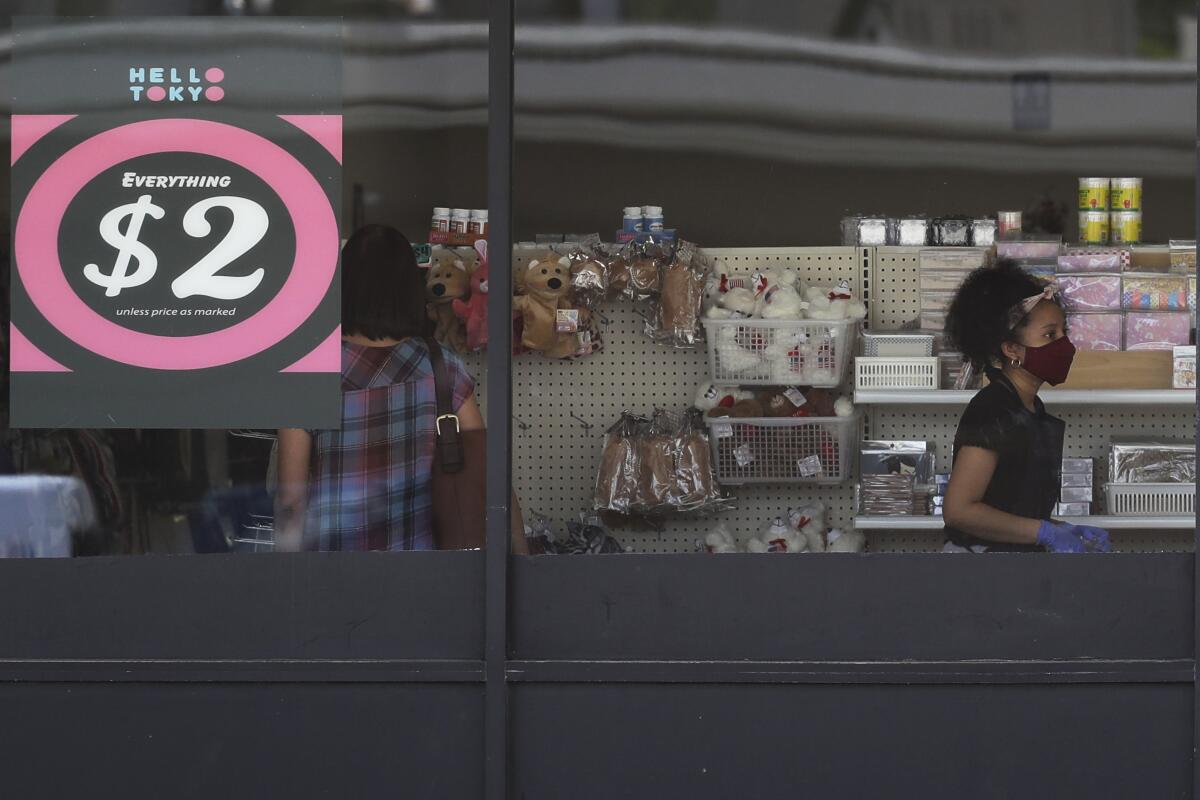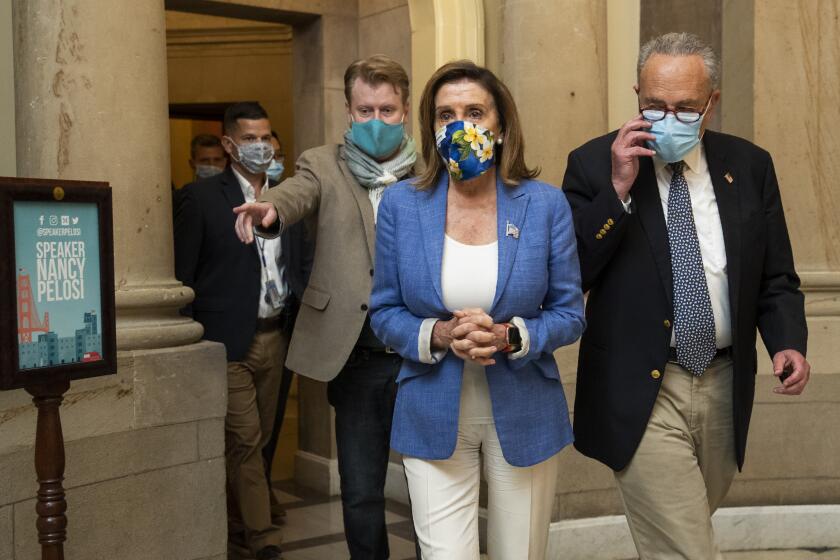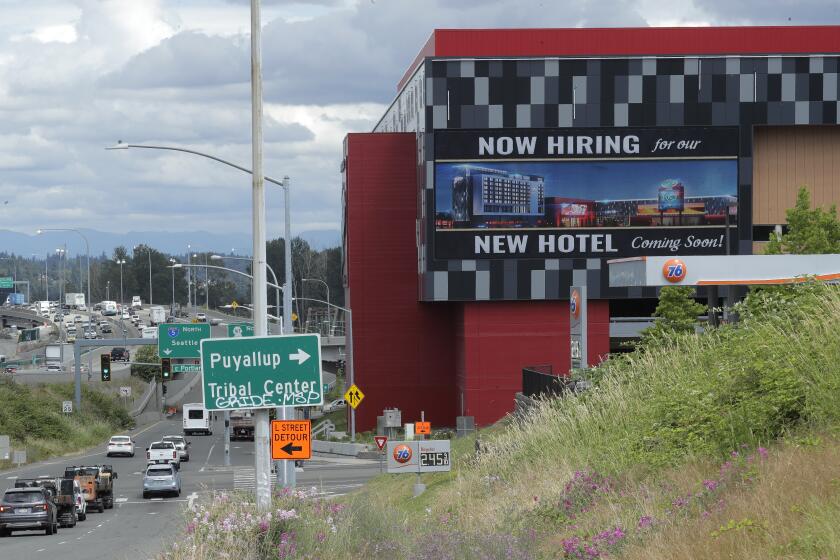U.S. retail sales return to pre-coronavirus levels in July, but a slowdown looms

- Share via
WASHINGTON — Americans increased their retail purchases by 1.2% in July, with solid gains in appliances and clothing helping to restore sales to their level before the COVID-19 pandemic erupted in March.
On the production side, U.S. industry also continued to regain ground but remains well behind where it was before the coronavirus struck.
Sales at retail stores and restaurants have now risen for three straight months, after plunges in March and April, when the pandemic shuttered businesses and paralyzed the economy. Still, much of the spending was fueled by government aid that had put more money in people’s pockets but has since expired. With Americans’ income now likely shrinking, economists expect a drop in spending and a potential weakening of growth.
Friday’s report by the Federal Reserve showed sharp increases in sales at electronics and appliances stores, reflecting the needs of mostly higher-income people who are now working from home. Furniture sales were flat after a huge gain in June.
The problem now is that roughly 28 million laid-off workers are no longer receiving a $600-a-week federal unemployment check that they had received in addition to their state benefit but that lapsed last month. In addition, a $1,200 stimulus check that was sent to many Americans in April and May likely won’t be repeated.
Negotiations in Congress on a new economic relief package have collapsed in rancor and show no sign of restarting anytime soon.
As political conventions start next week, negotiations to pass another coronavirus relief package will probably remain stalled until after Labor Day.
Many retailers have said the supplemental unemployment aid had helped spur sales of clothes and other nondiscretionary items in the spring and early summer.
“Uncertainty surrounding job and income prospects could weigh on consumer confidence and spending going forward, especially now that enhanced unemployment insurance measures which provided critical support to households have expired,” said Rubeela Farooqi, chief U.S. economist at High Frequency Economics.
Spending on credit and debit cards has been essentially flat since mid-June, according to a JPMorgan Chase index, after a steady rise that began in mid-April when stimulus checks were first mailed.
Retail sales include only about one-third of all consumer spending. The rest involves services — from haircuts and gym memberships to movie tickets and hotel rooms — all of which were hit disproportionately hard by the pandemic and have yet to recover.
The number of laid-off workers applying for unemployment aid falls below 1 million for the first time since the pandemic intensified in March.
In the April-June quarter, consumer spending collapsed by a record amount, causing the economy to shrink at a previously unheard-of annual rate of 32.9%. Economists have forecast that growth is rebounding in the July-September quarter at a roughly 20% annual rate, though that pace would still leave the economy far below pre-pandemic levels.
Industrial production — including output at factories, mines and utilities — climbed 3% in July after surging 5.7% in June. Still, production remains 8.4% below its level in February before the coronavirus began to spread rapidly in the United States.
Factory output rose 3.4% last month, pulled higher by a 28.3% gain in production of cars, trucks and auto parts.
Industry was running at 70.6% of capacity, up from its April low of 64.2% but well below its long-term, nearly 50-year average of 79.8%.
“We live in a world of financial illiteracy,” says one expert. “We are more open to talking about relationship challenges than we are about money.”
The government’s figures mask a huge shakeout in the retail industry, with Americans pulling sharply back on in-person shopping and spending more online. More than 40 retailers have filed for bankruptcy protection this year, about half of them since the pandemic. That’s about double the number for all of 2019.
Many of these retailers had been ailing before the pandemic. But analysts envision another wave of retail bankruptcies in coming months that would include some companies that were financially healthy before the virus struck.
In recent weeks, Ann Taylor’s parent company sought bankruptcy protection. So did the Lord & Taylor department store chain and the discount store chain Stein Mart, which has been in business for 112 years.
President Trump has signed an executive order that would replace the now-lapsed $600 a week in federal jobless aid with $300 a week from a disaster-relief fund. Yet that would require the states to establish a separate payment system that would be likely to take weeks. In the meantime, the loss of the $600 will cut recipients’ income, on average, by 50% to 75%.
More to Read
Inside the business of entertainment
The Wide Shot brings you news, analysis and insights on everything from streaming wars to production — and what it all means for the future.
You may occasionally receive promotional content from the Los Angeles Times.












